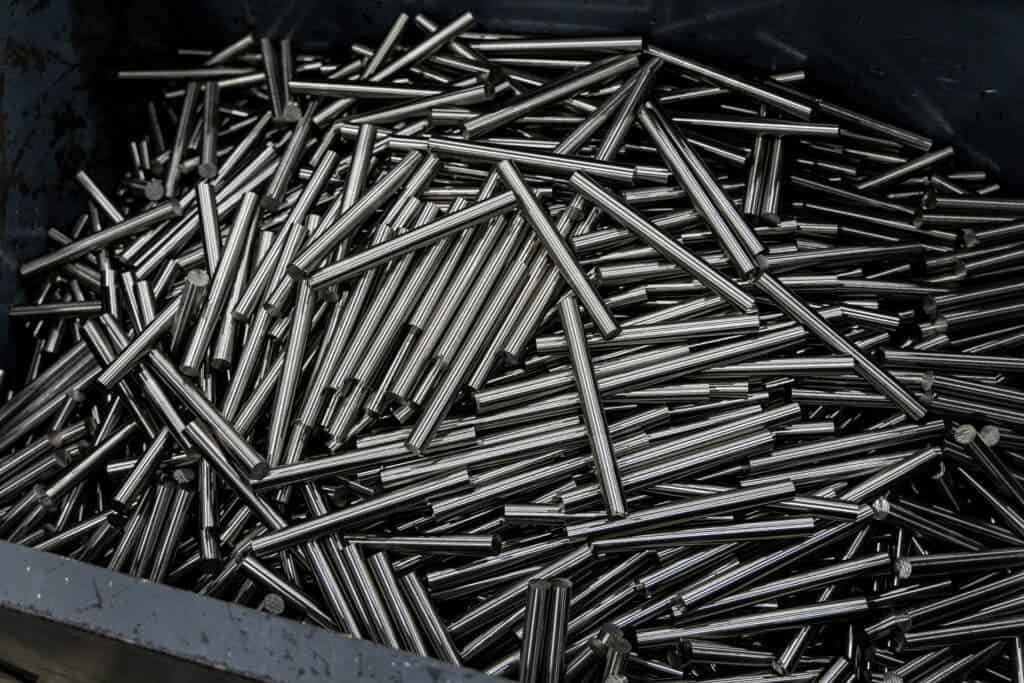Spacecraft materials don’t just need to have the right characteristics to fly — they have to endure high levels of heat, friction, and stress. In order to overcome these challenges, strong and long-lasting materials are needed in the construction of spacecraft and their different components. Recently, the scientists at NASA’s Glenn Research Center have developed a revolutionary metal alloy with the potential to make spacecraft and jet engine components more efficient and reliable under extreme conditions.

The new alloy named GRX-810 is created using 3D printing under the Transformational Tools and Technologies (TTT) project that is run by NASA’s Aeronautics Research Mission Directorate (ARMD). TTT has been involved in developing various other high-tech computational and experimental technologies for NASA.
According to the space agency, compared to contemporary materials, the new alloy GRX-810 can offer two times more strength and 1000 times more durability to a spacecraft at high temperatures — which offers not only more robustness but also ensures less fuel consumption and lower maintenance costs. Moreover, when the researchers at Glenn tested GRX-810 for tensility against existing alloys, the former was able to bend or stretch up to more than three and a half times than the latter before breaking under tension.
Creating GRX-810
GRX-810 is prepared from an oxide dispersion strengthened (ODS) alloy, which is generally used in high-temperature settings such as turbines and heat-exchange tubes. Due to the presence of ODS, GRX-810 can withstand temperatures over 1,090 degrees Celsius (2,000 degrees Fahrenheit). The nanoscale oxides particles of ODS are uniformly distributed throughout the alloy using the 3D printing method.

The development of materials like GRX-810 could take years with conventional methods that involve the trial and error approach. So in addition to 3D printing, the researchers at Glenn also employed thermodynamic modeling, a computational tool that allows scientists to predict the optimal composition for an alloy fast (within weeks or months) and at much lower costs. The tool was previously mentioned in the NASA Vision 2040 study.
“Applying these two processes [3D printing and thermodynamic modeling] has drastically accelerated the rate of our materials development. We can now produce new materials faster and with better performance than before,” says Tim Smith, Material Research Scientist at NASA.
The extraordinary might of GRX-810 alloy
In addition to being able to withstand extreme temperatures, GRX-810 is more durable, malleable, and flexible than the materials currently used by NASA. Plus, despite having double strength and impressive long-lasting performance, the alloy material is comparatively cost-effective, lightweight, and leads to overall increased engine efficiency.
The report published on NASA’s website also suggests that if a jet engine is built using GRX-810, then it is likely to experience reduced fuel burn and lower maintenance costs due to the above-mentioned properties of the material.
“This breakthrough is revolutionary for materials development. New types of stronger and more lightweight materials play a key role as NASA aims to change the future of flight. Previously, an increase in tensile strength usually lowered a material’s ability to stretch and bend before breaking, which is why our new alloy is remarkable,” said Dale Hopkins, Deputy Manager of the TTT project
The creation of GRX-810 is an important step towards achieving sustainable flight because it offers an opportunity to fly better and safer aircraft at reduced operational costs. The alloy also highlights the role that new techniques like thermodynamic modeling and 3D printing can play in the development of advanced flight-related technologies.
So don’t be surprised if you see GRX-810 transforming the aviation and space travel industry in the near future.






